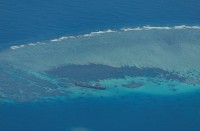MAKATI CITY, Apr. 14 — To meet investment targets for public infrastructure, the infrastructure committee of the National Economic and Development Authority approved the reinstitution of a three-year rolling infrastructure program in the national budget process starting 2017.
The three-year rolling infrastructure program (TRIP) promotes the optimal use of public resources for infrastructure development by assuring fund allocation for well-developed and readily-implementable projects for three years, according to NEDA.
The TRIP is a modification of the comprehensive and integrated infrastructure program (CIIP), which is a consolidated list of all infrastructure programs of the government, only that the TRIP puts more emphasis on immediate priorities to be undertaken in three-year periods.
“The multi-year rolling program for infrastructure will assure us that once an infrastructure program has been planned, and it is rolled out, it is going to continue to receive funding from the government. This is one of our efforts to synchronize and tighten the link between the programming and budgeting functions of the government for infrastructure projects and programs,” said Socioeconomic Planning Secretary Emmanuel F. Esguerra.
In previous years, agencies have been submitting projects for inclusion in the public investment program (PIP) and the CIIP. In October 2014, the NEDA infrastructure committee (or INFRACOM) approved the TRIP’s reinstitution in the national expenditure plan (NEP) process. TRIP will be incorporated in the budget process for the fiscal year of 2017.
“The TRIP will also ensure that the hard budget ceilings of government agencies are optimized and utilized in funding infrastructure programs that are responsive to the priorities and strategies in the Philippine Development Plan. More importantly, it will see to it that the government’s target for increased investment in public infrastructure is met,” the Cabinet official said.
Public infrastructure spending is targeted to reach 5 percent of GDP in 2016 from 2 percent in 2012.
Thus, through the TRIP, government will be able to address gaps in the infrastructure sector including pending projects from previous years, some which are 4,710 kilometers of national roads that need to be paved, 366,014 units of housing that are up for construction, and 1.2 million hectares for irrigation.
Once implemented, government agencies will submit their respective three-year infrastructure programs for the review and compilation of NEDA. The consolidated TRIP will be presented to the NEDA INFRACOM for confirmation or approval.
The approved consolidated TRIP will then be submitted to the Department of Budget and Management to determine program spending levels and indicative budget ceilings. The TRIP, which will be updated annually, will be the basis for the list of programs, activities, and projects under the NEP. (NEDA)







